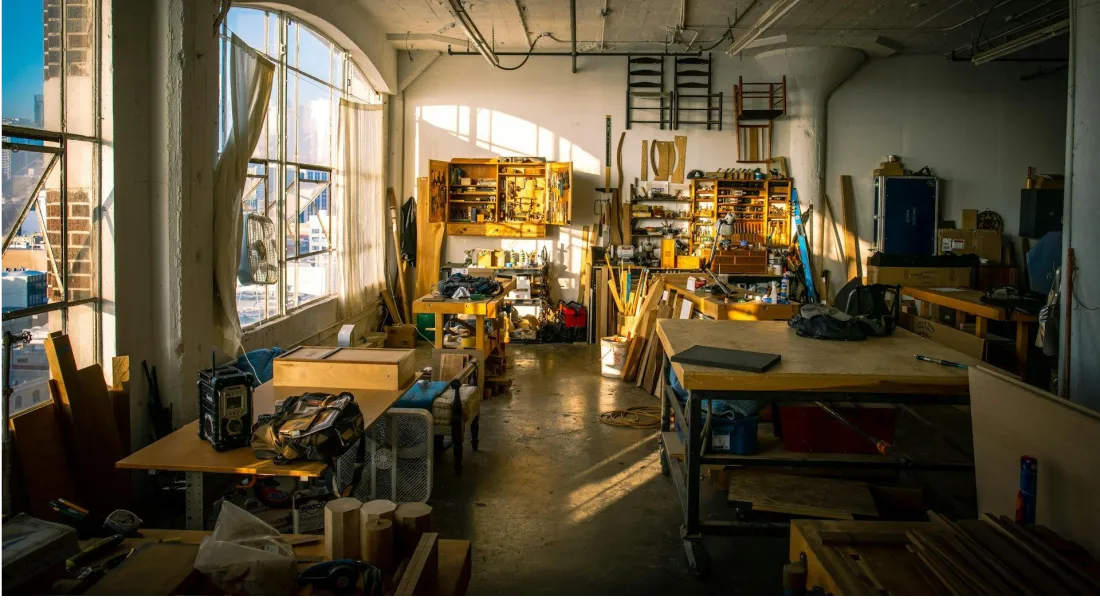How To Set Up Your First Woodworking Woodshop

There’s something deeply satisfying about working with your hands—the scent of fresh-cut lumber, the hum of your first power tool, and the feeling of creating something real from raw wood. I still remember the first time I set up my own little corner of the garage, full of excitement, a few borrowed tools, and a lot of trial and error. If you’re just getting started, I’ve been right where you are—unsure where to begin but eager to dive in.
This post is for anyone dreaming of building their first woodworking woodshop, whether it's in a garage, a basement, or a backyard shed. We’ll walk through the basics—what tools you really need, how to make the most of your space, and tips I wish someone had told me when I started. Let’s turn that blank space into your creative sanctuary, one board at a time.

- Choose the right space
Your workshop doesn’t need to be massive—but it does need to be practical.
✔️ What to look for:
Size: At least 8x10 feet is ideal for basic woodworking.
Ventilation: Crucial for removing dust and fumes from finishes.
Electricity: Access to outlets for power tools and lighting.
Lighting: Natural light is great, but strong overhead and task lighting is essential.
🧠 Pro Tip:
If your space is small, consider foldable benches, mobile tool carts, or wall-mounted storage to maximize functionality.

- Gather Essential Tools
Start with a core set of beginner-friendly tools. You don’t need everything at once—just the basics to get building.
🔧 Hand Tools:
Tape measure
Combination square
Hammer
Chisels
Handsaw
⚡ Power Tools:
Drill/driver
Jigsaw or circular saw
Orbital sander
Shop vacuum or dust extractor
🪚 Optional but Helpful Tools:
Miter saw (for accurate angle cuts)
Workbench or worktable
Clamps (bar, spring, and corner clamps)
🧠 Pro Tip:
Buy quality tools from reputable brands. They’ll last longer and perform better—especially when you’re learning.

- Build or Buy a Workbench
A sturdy workbench is the heart of any woodworking shop. You can build a basic one yourself from 2x4s and plywood, or purchase a pre-made model.
✔️ Key Features:
Solid, flat surface
At least 36" high for comfortable standing work
Storage space underneath for tools or materials

- Organise Your Tools And Materials
Efficient storage saves time and keeps your workspace safe and tidy.
🔩 Tool Storage Ideas:
Pegboard wall for hanging tools
Magnetic strips for small metal tools
Drawer units or toolboxes
Wall-mounted shelves for clamps or finishes
🪵 Lumber Storage Tips:
Store long boards flat or upright along a wall
Use wall brackets or PVC pipe racks for offcuts
Keep wood dry and off the ground to prevent warping

- Plan for Dust Collection and Cleanup
Wood dust isn't just messy—it can be harmful over time. Even a basic system helps protect your health.
🌀 Options:
Shop vac with a HEPA filter (minimum for beginners)
Dust separator to reduce filter clogs
Air filter or open windows for ventilation
🧼 Also keep on hand:
Broom and dustpan
Rags for wiping glue or stain
Trash bin or scrap wood bin

- Prioritise Safety
Safety is non-negotiable in woodworking. Make sure your workshop is equipped to protect you from common risks.
🦺 Must-Have Safety Gear:
Safety glasses or goggles
Ear protection (earmuffs or plugs)
Dust mask or respirator
First-aid kit
Fire extinguisher
💡 Safety Tips:
Keep cords out of walkways
Never wear loose clothing or jewelry
Always unplug tools before changing blades or bits
Click here to find amazing woodworking plans that make complex projects easy!

- Create a Workflow-Friendly Layout
Arrange your tools and workspace to match how you build.
🔄 Layout Suggestions:
Workbench at the center of the workspace
Power tools along the walls or on mobile bases
Tool wall or storage within arm’s reach of the bench
Clear floor space for assembling larger projects
✅ Final Thoughts
Setting up your first woodworking workshop is a rewarding step that sets the foundation for countless future projects. Start small, invest in the basics, and focus on safety and functionality. As your skills grow, you’ll naturally expand your space and tool collection.
Remember—your first shop doesn’t need to be perfect. It just needs to work for you. So grab your tools, roll up your sleeves, and start building!
